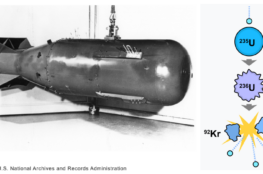by Muralidhar Das.
Carefully considering the knowledge I received directly from Srila Bhakti Rakshak Sridhar Maharaj, my initiating Guru, I now feel I understand something about the mysterious state of consciousness “I am” that exists inside me, and beyond me.
I know that when sleepers awake, the awareness “I am” encounters new landscapes and unexpected perceptions; in this state of awareness an awakened mind actively discovers it can use arms, legs and mouths to do things; then, without hesitation, new things get done. In the Sanskrit language, this activity of a sentient being is termed karma. The fact that karma exists, that karma is not merely a concept, is something people can directly see to be true. This is one teaching taught by Srila Sridhar Maharaj.
In the Katha Upanishad 2.1.1 we find this verse: paranci khani vyatrinatsvayambhustasmatparanpasyati nantaratman kasciddhirah pratyag atmanam aikshada vrittacaksur amritatvam icchan “The Higher Self has set the doors of the body to face outwards, and the finite jiva self chooses to gaze outward and not towards the infinite Higher Self within. Hardly one wise man among the masses of living beings, one wise man alone who desires immortality, turns his eyes inward and sees the Higher Self within himself.”
There is also verse 1.3 of the Svetasvatara Upanishad to consider: te dhyanayoganugata apashyan devatmashaktim sva gunair nigudham, yah karanani nikhilani tani kalatma yukta ‘nyadhitisthatyekah “Sages engaged in meditation envisioned the Power of the Higher Self. They saw how a Self-aware Deity possesses an infinitely powerful Shakti, a Power energising countless jiva souls controlled by the three gunas of Nature (ignorance-based intuition, passions, and good thinking). Sages saw how the Power of the Higher Self is ruling over every other cause of creation, including Time and the sentient beings, the jiva souls.”
A sentient being gets influenced by sattva, rajasa and tamasa, the three gunas of Nature. That is to say, the perceptions and conceptions sentient beings perceive are products of the three gunas of Nature functioning inside our living bodies: we conceive false impressions formed by ignorance-based intuition (tamasa), passionate thoughts (rajasa), and true knowledge (sattva) about reality. Our knowledge is sometimes realistic but at other times our gut feelings may be utterly misleading. Consequently, the karma we engage in can be something very good, or utterly bad.
The Isha Upanishad verse 2 says: kurvanneveha karmani jijivishecchatam samah, evam tvayi nanyatheto’sti na karma lipyate nare “Doing good work here, any man may live his allotted hundred years. It is right for a man to engage in karma here if he willingly accepts whatever the Lord provides, but not otherwise. That karma will not bind that man.”
Actions have consequences. We should all strive to avoid doing actions that cause troubling consequences. The Nobel Prize–winning physicist Erwin Schrödinger, in his book “What is Life?” speculated about determinism, free will and the mysterious nature of human consciousness. He wanted to know if we can draw the correct conclusion from the following two premises:
(1) My body functions as a pure mechanism according to Laws of Nature; and
(2) I know, by incontrovertible direct experience, that I am directing my body’s movements, of which I can foresee effects of movements that may be fateful and destructive, in which case I must take responsibility for having made those fateful moves.
The only possible inference from these two facts, Schrödinger wrote, is “I think, that I – I in the widest meaning of the word, that is to say, every conscious mind that has ever said or felt ‘I’ – I am a person who controls the ‘motion of atoms’ according to the Laws of Nature”.
Our thoughts move atoms. Schrödinger stated that this insight is not new. The Upanishads present the same conclusion. The sages of the Upanishads knew about atoms and those sages said ‘I’ engage in activities in a material world where I can move bodies of atoms from place to place, doing whatever I will. Each person’s activities create specific consequences, specifc karma. Like Brahma the creator, with our thoughts we make the world.
The Svetasvatara Upanishad says God possesses a Power known as Shakti. This Shakti is the Power of God we perceive as Nature. It is to be noted that God or “I am” is the transcendental Higher Self existing within every sentient being, and that all karma and all the activities of sentient beings are manifestations of Nature, the Power of God.
Further to this, the Svetasvatara Upanishad additionally says in verse 6.13: nityo nityanam cetanas cetananam eko bahunam yo vidadhati kaman tatkaranam sankhya yoga adhigamyam jnatva devam mucyate sarvapashaih “Amongst all the eternal, sentient beings, One is an all-pervading eternal being. Amongst all the eternal, conscious beings, One is an all-pervading all-knowing being. That Supreme Being is the prime cause of everything in existence. The One is the origin of everything that can be known through proper understanding of Sankhya and Yoga. By knowing that Supreme Being one attains liberation.”
In view of these things laid out here, I feel I should make an effort to explain Sankhya, Yoga and the teachings of the Upanishads and Veda, according to the school of thought of my Guru Maharaj, Srila Bhakti Rakshak Sridhar Maharaj. I believe knowing the illuminating teachings of Srila Sridhar Maharaj will be useful to people searching to understand the true nature of Reality.
Beginning from this starting point, I intend to present the thoughtful teachings of Srila Sridhar Maharaj here in a series of articles. Articles written for the benefit of all the children of the world. May all the children of the world find happiness in this world! This place where many people who lived in the past had the good fortune to meet God face to face.



